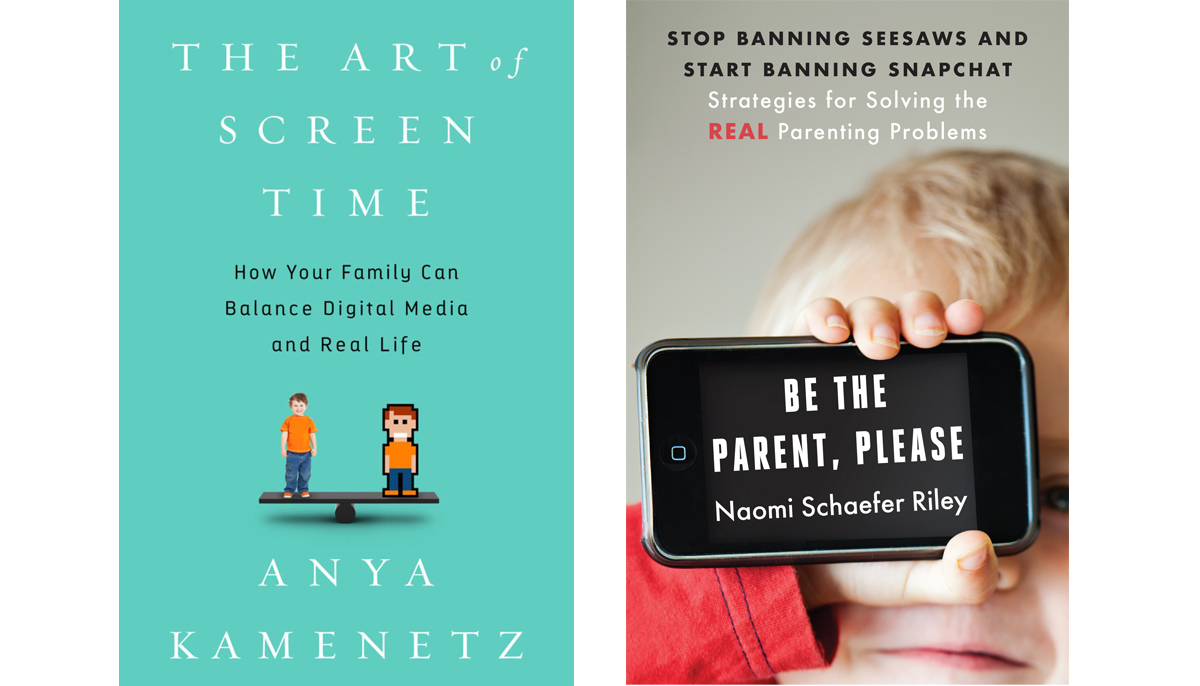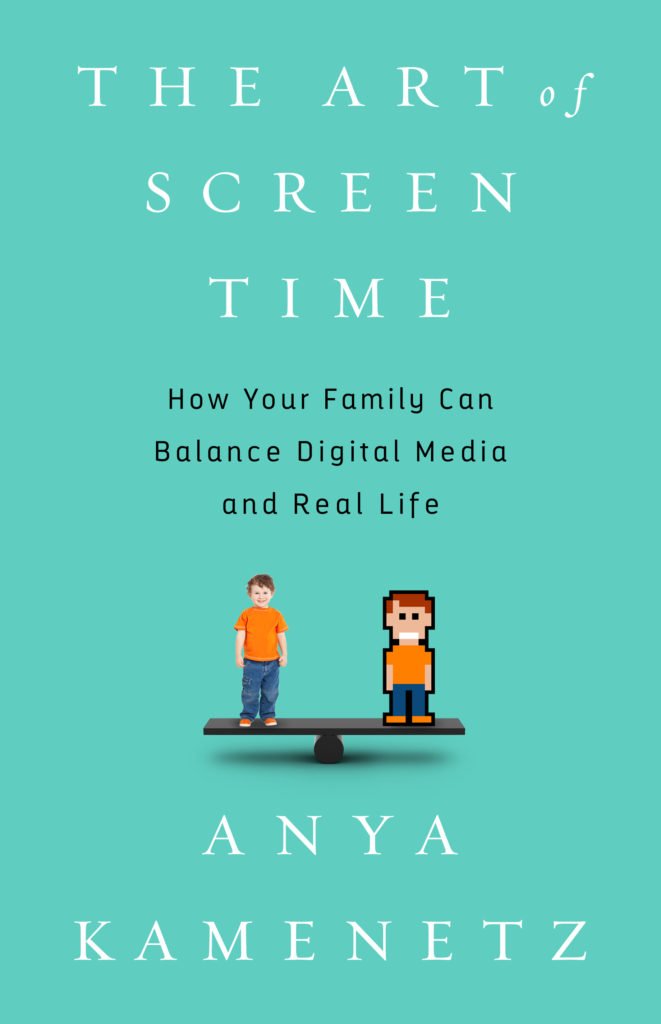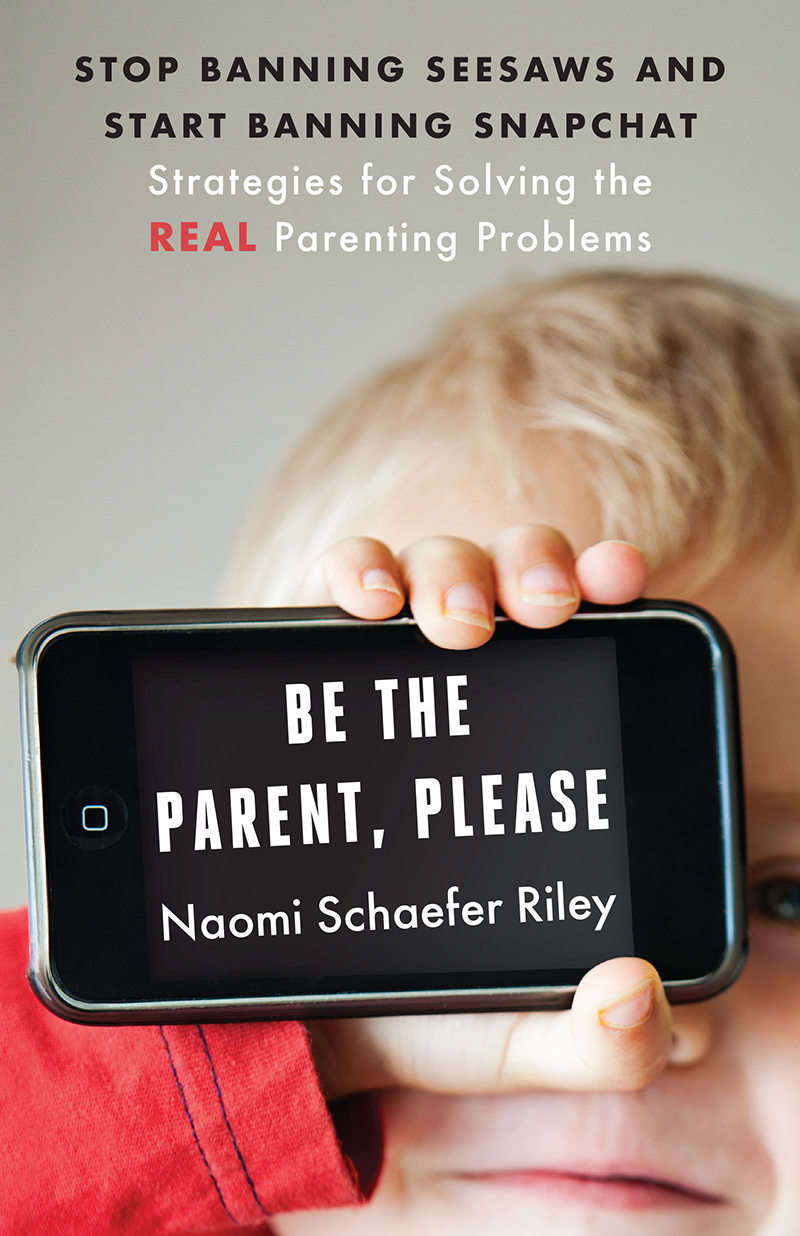
The Art of Screen Time: How Your Family Can Balance Digital Media & Real Life
by Anya Kamenetz
Public Affairs, 2018, $27.00, 266 pages
Be the Parent, Please: Stop Banning Seesaws and Start Banning Snapchat: Strategies for Solving the Real Parenting Problems
by Naomi Schaefer Riley
Templeton Press, 2018, $24.95, 192 pages
As reviewed by Michael J. Petrilli
By virtually every indicator, today’s upper-middle-class American children are enjoying advantages that make them perhaps the luckiest cohort in the history of the world. Most are being raised by two loving parents; the incidence of violence and abuse is at record lows; teenage pregnancy is rare and getting rarer; even drug and alcohol use is down dramatically.
But we humans are hardwired to worry, so worry we do. And in the case of us neurotic upper-middle-class parents, what we worry about the most when it comes to our kids are screens. We worry that smartphones are giving our children attention deficit disorder. We worry that violent video games will turn them into the next mass shooter. We worry that sexting will ruin their reputations and self-esteem, or that a thoughtless post will ruin their college applications. We worry, we worry, we worry!
Into this arena of angst march two new books, each offering advice to parents (and given the book market, that means mostly upper-middle-class parents) about how to cope with the ubiquitous screens in our children’s lives. The first offers a mostly soothing message—don’t worry so much, your kid will probably be fine!—while the other ratchets the alarm up to eleven. As a father of two school-age children, and the more permissive parent when it comes to screen time, I certainly enjoyed the former more than the latter. Still, I can’t help but—yes—worry that I’m just deluding myself.
* * *
 With The Art of Screen Time, Anya Kamenetz has all the makings of a bestseller. As NPR’s ed-tech reporter, she’s got the perfect credentials for the project and quite the platform to boot. Being the mother of two young girls only enhances her credibility. The book itself is well-written, easy to follow, and exceedingly balanced, taking readers through the research on screens and kids in a lay-friendly yet technically accurate way.
With The Art of Screen Time, Anya Kamenetz has all the makings of a bestseller. As NPR’s ed-tech reporter, she’s got the perfect credentials for the project and quite the platform to boot. Being the mother of two young girls only enhances her credibility. The book itself is well-written, easy to follow, and exceedingly balanced, taking readers through the research on screens and kids in a lay-friendly yet technically accurate way.
That research, alas, is more limited than anyone would hope, almost all of it correlational rather than causal, the bulk of it coming from the television era, with very little about the smartphones and tablets that now rule our lives. Still, from Kamenetz’s perspective, most studies point to what some in the field call the “dandelions-versus-orchids theory.” In short, most kids are resilient and hardy, like dandelions, and can spend time on screens without suffering ill effects. (Within reason, of course; passively watching television for hours on end is associated with more snacking and thus obesity; and nobody who wants a good night’s sleep should be on screens right before bedtime.) Harried parents of “dandelions” shouldn’t feel too guilty about giving their kids a little screen time, Kamenetz argues, especially if it helps Mom and Dad stay sane.
A small group of kids, however, are fragile like orchids and face real dangers from excessive screen time or certain activities like gaming. Internet addiction is real and devastating for some children and their families. And while violent content per se doesn’t typically lead to greater aggression, for some kids it’s associated with greater fear and anxiety, as well as diminished sensitivity to the suffering of others. Kamenetz is clear that, if you’ve got an orchid-child, you have to parent accordingly.
Another helpful analogy she offers is to food. Riffing off Michael Pollan’s famous adage, she advises: “Enjoy screens. Not too much. Mostly with others.” The focus on joy is refreshing given the anxiety that dominated most of the debate. “To return to the healthy-diet metaphor, we have some idea what excessive consumption looks like, what kinds of ingredients are toxic, and the symptoms of dangerous allergies. But what is the media equivalent of the family dinner prepared with farmer’s market veggies? What about the backyard barbeque with watermelon and s’mores?”
As I have written in these pages, there’s a lot of great educational content available for families today via television, apps, streaming services, and more. Engaging in this sort of tasty media diet is good for kids’ learning and great for family togetherness. Bravo for Kamenetz for saying so.
Also welcome for me was her chapter on parents and screens. It’s one thing to worry about kids staring at smartphones or playing video games ad nauseum, but what about our own screen use? She reminds us to be good role models and to put away the phones during family time. She also notes both the pros and cons of parenting in the age of social media. It’s one thing to have accessible advice and support from “mommy blogs” and the like, but quite another to sense that our parenting can be constantly judged by our family and friends on Facebook.
The Art of Screen Time isn’t perfect. For one, it betrays Kamenetz’s own lived experience as—so far—the mom of young children; the passages on tweens and teens feel skimpier than those on babies, toddlers, and little kids. She attempts to cover most of the big topics, with particularly helpful sections on sexting, online pornography, and cyberbullying. But she leaves out one of the biggest questions we parents face: when to give a kid a smartphone.
Conservative readers may also chafe at her casual liberalism, particularly apparent when describing the technology industry, which she depicts in sinister tones. That is doubly so in her scathing look at screens in schools, which even she admits is harsher than she’d expected it to be.
What most disappointed me, though, was her diffidence toward bad parenting. That may also arise from her leftish tendencies, but a little judgment would go a long way. When parents allow their children to eat junk food and become obese, for example, it’s like letting kids play in traffic, and we shouldn’t hesitate to term that bad parenting. When regularly allowing kids unlimited screen time leaves them in an agitated state or worse, we should label that bad parenting, too.
* * *
 A deficit of judgment and a surfeit of liberalism are not things you’ll find in Naomi Schafer Riley’s new book. A fellow at the American Enterprise Institute and Independent Women’s Forum, Riley is unafraid to admonish parents to limit or even eliminate screen time and, as the title commands, Be the Parent, Please.
A deficit of judgment and a surfeit of liberalism are not things you’ll find in Naomi Schafer Riley’s new book. A fellow at the American Enterprise Institute and Independent Women’s Forum, Riley is unafraid to admonish parents to limit or even eliminate screen time and, as the title commands, Be the Parent, Please.
She covers a lot of the same research and quotes many of the same analysts as Kamenetz but reaches a more alarmist conclusion about the potential harms of screen time. That’s partly because she doesn’t discount correlational studies as much as Kamenetz does and partly because she has a greater focus on the orchids: the relatively few kids who are suffering mightily thanks to screens. She comes close to adopting an “abstinence-only” approach to screen time, lauding parents who manage to raise children the old-fashioned way in twenty-first-century America.
When kids get old enough to navigate their communities without supervision, Riley recommends buying them a flip phone, or even just a watch, instead of a smartphone. “You may think that you need your kid to have a phone to arrange pick-ups and drop-offs,” she writes. “But you don’t. Agree to meet at a time. You are not Uber. If something goes wrong, teach your child how to ask the adult present to contact you.”
Though I found the tone somewhat overblown—recall that I’m a dad who doesn’t want to find harm in moderate screen time—the book is a helpful yin to Kamenetz’s yang. Perhaps because Riley’s own children are a bit older, it’s also stronger when it comes to tweens and teens—and sometimes downright terrifying. Just as you shouldn’t look at screens before bedtime, you shouldn’t read her sections on internet porn or sexting if you have a teenager and ever want to sleep again.
Particularly helpful were Riley’s “Tips for Cutting Back,” spread throughout the book. For example: “Diets are diets, whether they’re for food or screen time. If you’re not consistent in the first few weeks about the rules, you will fail. Kids will sense your weakness, and they will keep asking until you break down.” And: “Children are not adults. They do not like to sit still for long periods of time. If the only way you can get them to do so is with a device, ask if the children really need to be there. Whether it’s a fancy restaurant or their brother’s three-hour swim meet, maybe that’s not where they belong.”
Despite their differences in tone and conclusions, Kamenetz and Riley agree on some points. They both view technology in schools with great skepticism, and they both worry about screen time crowding out more wholesome pursuits, like reading and outdoor play.
They also both skirt the big issue that needs more attention: how to encourage poor and working-class parents to be more responsible when it comes to their kids’ use of screens. As both authors acknowledge, upper-middle-class kids tend to do fine, and many of their parents already monitor and limit their screen time. But the data indicate that many poor and working-class kids spend endless hours with their phones, video games, and televisions, potentially contributing to poor academic performance, higher rates of obesity and social isolation, and other negative outcomes.
It’s hard to know how to tackle this problem, but we might start by following Charles Murray’s adage to “preach what we practice.” Parents who read these books are already grappling with how to deal with the screens in their kids’ lives. We need the parents who aren’t reading these books to grapple with this issue, too.
Mike Petrilli is president of the Thomas B. Fordham Institute and executive editor of Education Next.
This article appeared in the Summer 2018 issue of Education Next. Suggested citation format:
Petrilli, M.J. (2018). Parenting in the iPhone Age: Yin and yang messages on how to cope. Education Next, 18(3), 81-82.


